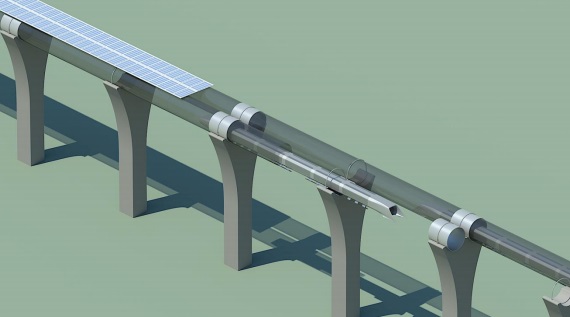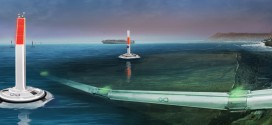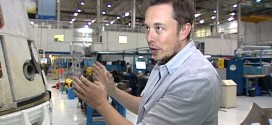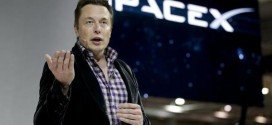Hyperloop is the more controversial project Elon Musk has cooked up and even though many have frowned upon it, the project is gathering more and more support. The Hyperloop is an idea for public transportation which involves underground trains, compressed air and tubes. If that sounds awkward to you, it’s because many said that Elon Musk couldn’t bring the project to life and the goals he has set for it are not realistic at all.
It seems that even though public opinion isn’t very favorable of the project, engineers are indeed interested in making Hyperloop a reality and they are working in conjunction with Elon Musk to make tubular transportation real. The concept of Hyperloop describes underground trains that are powered by compressed air that can be rode in tubular roads constructed deep under our feet. While the idea isn’t entirely unheard of, the fact that Musk wants to accomplish the feat using compressed air seems to be contested a lot.
Hyperloop Transportation Technologies, alongside a couple of UCLA students decided that they would support the idea and have already begun working on the project, for free. If you haven’t heard of the company, it’s because it’s a startup. That doesn’t mean that it doesn’t know what it’s doing or who it is employing, as sources revealed that engineers from companies like Boeing, SpaceX and Airbus are actually already working on Hyperloop transportation. Even though Hyperloop is far from being actually real, the team of engineers and students have already devices a plan, drawn a route for the trains, stations and have tried out various mockups of the capsule-shaped things people would be riding underground.
One of the issues the team thought would be problematic was motion sickness, which is why they tried keeping the routes between cities as straight as possible so as people who would eventually board the train wouldn’t get off at the first stop and call the authorities. The actual train cars, in the vision of the engineers, would look like bubbles that would unload from the side of the train when pulling into stations. The weird doors that Elon Musk proposed couldn’t be implemented in the design, as the team found out they were quite cumbersome and impractical. The trains themselves would be stacked one above the other so that collisions would be avoided. The engineers even designed first class and economy class within the train bubbles, which is neat, since it suggests that we could have some sort of high-tech luxurious bubble at our disposition once the train is tested and launched.
The most troublesome part of the whole design is friction. Even though the team has figured out how to build the vaccum tubes, supports and trains, they haven’t found a way to make them travel in the tubes without bursting into flames from the friction. Elon Musk initially thought that an air-hockey pocket of air created by a compressor would solve the issue, but the team from Hyperloop Transportation Technologies and UCLA got a better idea: magnetic levitation. That sounds extremely futuristic, but the technology already exists, so it’s not impossible to be able to implement it it transportation. In any case, the team thinks that they would be able to build a prototype next year and we could have a final product on our hands by the time we hit 2024. We don’t know if the project will succeed in that time span, since the road as well as the bubbles cost an enormous amount of money, billions and billions of bucks to build.
UCLA Architecture and Urban Design and Hyperloop Technologies, Inc. released their findings from their fall quarter research partnership earlier this week. Led by Professor Craig Hodgetts in collaboration with Hyperloop Transportation Technologies Inc. CEO Dirk Ahlborn, the studio has been devoted to building a foundation of knowledge through research into urban demographics, seating arrangements, and topographic conditions.
https://www.youtube.com/watch?v=Zdgk8zTmKoc
https://www.youtube.com/watch?v=3GGOjM-wA-A
https://www.youtube.com/watch?v=6hLoZqlWvNQ
Credit URL : Hodgetts
 Load the Game Video Games, Reviews, Game News, Game Reviews & Game Video Trailers
Load the Game Video Games, Reviews, Game News, Game Reviews & Game Video Trailers



